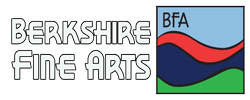The Rake's Progress
Glimmerglass Festival's Production of Stravinsky's Opera Sparkles
By: Victor Cordell - Jul 21, 2025
Like many innovative artists, Igor Stravinsky, one of the most influential music composers of the 20th century, evolved through distinct stylistic periods. As his neo-classical period reached its end in 1951, he produced his only completed opera, The Rake’s Progress. Although it has proven to be one of the most enduring and popular in the English-language opera canon, it was not critically well-received at the outset. Atonal serialism, initiated by Arnold Schoenberg and later adopted by Stravinsky, had long dominated serious music. The Glimmerglass Festival offers a winsome version of this important opera, led by a stellar cast and a powerful look.
The composer was drawn to William Hogarth’s series of paintings, A Rake’s Progress, whose genesis is based on the Orfeo myth. To create the narrative, Stravinsky turned to eminent poet W. H. Auden, who later drafted another poet, Chester Kallman to the project. Not surprisingly, this team created one of the most literate librettos in this fantasy opera, full of poetic syntax, beauty, and allegory.
Tom Rakewell is a country boy who shuns a regular job and instead hopes to fare well relying on his wits. Along comes Nick Shadow, who, unbeknownst to Tom, is the Devil. Shadow offers to be Tom’s servant and to introduce him to the high life in London, which turns out to center on a brothel. Only too late will Tom realize the mistake that he’s made.
The part of Tom represents one of the more challenging tenor roles in the repertory. Not only is his stage time enormous, but his four major arias can sap the strength. Fortunately, athletic Adrian Kramer has the stamina, as well as the vocal skill, to carry it off with seeming ease. He steps up in particular with his signature aria “Here I Stand,” which reflects his delusional confidence in his ability to make good choices with good outcomes.
As the faux ally who leads Tom to his descent, Aleksey Bogdanov performs Nick. His slick and swarthy appearance telegraphs his deceit, and while his deep, burly voice resonates ominously, he gains Tom’s confidence by saying things that he wants to hear.
In pursuing his fancy, Tom also abandons his betrothed from the country, Anne Trulove. Lydia Grindatto is the vision of innocence as the mournful yet hopeful Anne, who will continue to naively pursue Tom. Perhaps the best received singing in this opening performance was Grindatto’s long, beautiful Act 1 soliloquy, “No Word from Tom,” in which she excels, displaying her rich coloratura soprano voice.
Visual elements on stage are a bit staid until the brothel scenes when they explode. The score makes considerable use of choruses, and the choristers in effect double as a corps de danse who contribute to the overall appearance. Dressed in tawdry black and white, the carnal look and undulating movement is reminiscent of what you might see in Cabaret or Three Penny Opera.
In Tom’s plunge to the bottom, we meet the final main character, Baba the Turk. By some twisted logic, Nick induces Tom to marry Baba as an act of independence in Nick’s deceitful aria “Master, Observe the Host of Mankind.” Baba is performed by muscular-voiced mezzo, Deborah Nansteel, who gets to display her overall power, and particularly the strong top end of her range when Tom turns on her. Her “Scorned! Abused! Neglected!” is a raging tour de force. Oh, did I fail to mention that Baba is a bearded lady in a circus? Well, things do get worse, as all of Tom’s three great wishes go asunder, but I’ll leave it to the reader to suss out those details.
The Glimmerglass interpretation of Stravinsky’s masterpiece works wonderfully. Apart from the individual singing performances by the major principals, several tantalizing but too brief ensembles enliven the score. The set design by the remarkable, recently deceased John Conklin (see my review of The House on Mango Street, or do an Internet search) is striking. Visuals from Lynly A. Saunders myriad of cast costumes and Robert Wierzel’s lighting suit the material admirably under Eric Sean Fogel’s stage direction and writhing choreography.
From this reviewer’s perspective, the least engaging element in the opera is the music itself. Coming from a great composer, it is technically refined with a classical backbone but dissonance to match the discomfort of the characters. Opportunities do exist for singers to stretch their vocal muscles. Choruses and ensembles, especially a duet between Tom and Nick as well as a couple of trios, appeal, though these gems are too short. Yet, nothing in the music is memorable or will appear in the Top 100 Hits from Opera.
Nonetheless, the colorful narrative fits the music well, and the production aptly fulfills the demands of the opera. It also makes a strong statement that is worth hearing – “Idle hands are the devil’s workshop.”
The Rake’s Progress, composed by Igor Stravinsky with libretto by W. H. Auden and Chester Kallman, is produced by Glimmerglass Festival and plays at Alice Busch Opera Theater, 7300 State Highway 80, Cooperstown, NY through August 15, 2025.
